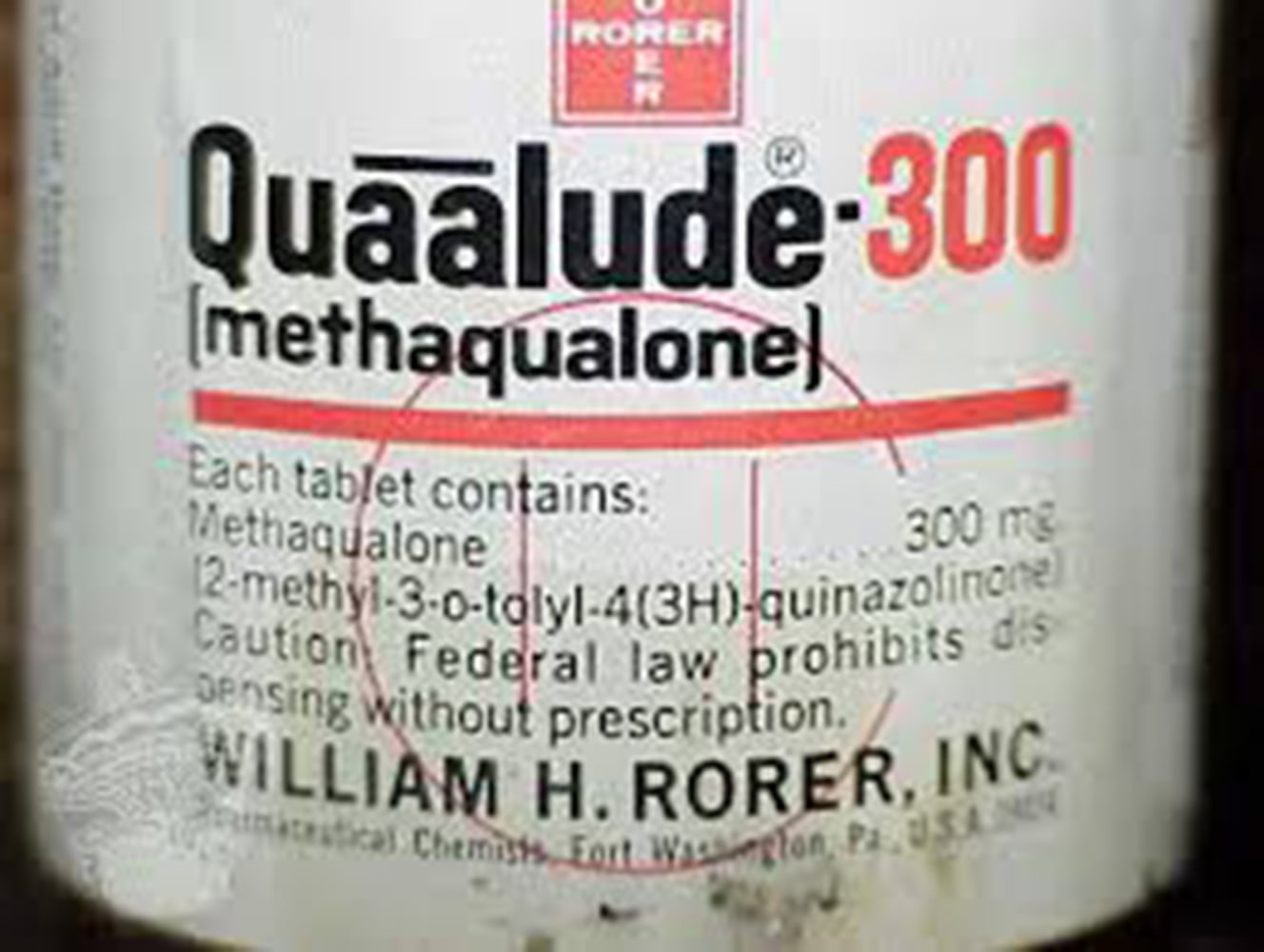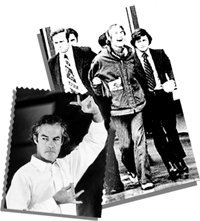nobody can prescribe, highest abuse
Ex (1):
1 - Heroine,
2 - LSD,
3 - Marijuana (cannabis),
4 - 3,4-methylenedioxymethamphetamine - Ectasy (MDMA),
5 - Peyote,
6 - Metaqualone - quaalude;
"Metaqualone - quaalude: Pronounced /ˈkweɪluːd/ Recreational use of the drug
gained popularity in the 1970s and it was made a Schedule I drug in the
United States in 1984. Quaaludes have reentered public discussion since
revelations that Bill Cosby allegedly raped women after providing them
with the drug. Quaalude was the party drug of the 1970s.
A depressant, Quaalude (methaqualone) was known as “disco biscuits”
because it released users’ sexual inhibitions, making it a nightlife
mainstay." (2)
References:
(1): http://medshadow.org/drug-classifications-schedule-ii-iii-iv-v/
(2): http://www.newsweek.com/do-people-still-take-quaaludes-357914
(3): http://crooksandliars.com/2015/07/what-are-quaaludes
(4): http://www.wsj.com/articles/SB10001424052748704699604575343133677383828
(5): https://en.wikipedia.org/wiki/MDMA
(6): https://www.drugabuse.gov/publications/mdma-ecstasy-abuse/brief-history-mdma
(7): http://www.drugfreeworld.org/drugfacts/lsd/a-short-history.html
(8): http://www.nhtsa.gov/people/injury/research/job185drugs/lysergic.htmhttp://www.nhtsa.gov/people/injury/research/job185drugs/lysergic.htm
(9): https://en.wikipedia.org/wiki/Heroin#Etymology
(10): https://www.drugabuse.gov/publications/drugfacts/heroin
Ex (1):
1 - Heroine,
2 - LSD,
3 - Marijuana (cannabis),
4 - 3,4-methylenedioxymethamphetamine - Ectasy (MDMA),
5 - Peyote,
6 - Metaqualone - quaalude;
 |
| Wonder Me! mnemonics to remember for Schedule I drug: The heroine 1
smokes MJ2, drinks Liquid-Sh!! 3 & pecks at Peyote4 to feel Ectastic5 in
the Quiet Interlude6 music. Dangerous!!!!!! |
 | ||
| Peyote: a hallugenic agent popular in Native American. Ref.: Bones TV show :) |
 |
| Quaalude: "The name is a play on the phrase "quiet interlude." (3) |
 |
| Ecstasy |
 |
| Ectasy |
 |
| Ectasy |
MDMA is often considered the drug of choice within the rave culture and is also used at clubs, festivals such as Electric Daisy (4) (5). In the rave environment, the sensory effects from the music and lighting are often highly synergistic with the drug. The psychedelic amphetamine quality of MDMA offers multiple reasons for its appeals to users in the rave setting. Some users enjoy the feeling of mass communion from the inhibition-reducing effects of the drug, while others use it as party fuel because of the drug's stimulatory effects.
MDMA was developed in Germany in the early 1900s as a parent compound to be used to synthesize other pharmaceuticals. During the 1970s, in the United States, some psychiatrists began using MDMA as a psychotherapeutic tool, despite the fact that the drug had never undergone formal clinical trials nor received approval from the U.S. Food and Drug Administration (FDA) for use in humans. In fact, it was only in late 2000 that the FDA approved the first small clinical trial for MDMA that will determine if the drug can be used safely with 2 sessions of ongoing psychotherapy under carefully monitored conditions to treat post-traumatic stress disorder. Nevertheless, the drug gained a small following among psychiatrists in the late 1970s and early 1980s, with some even calling it "penicillin for the soul" because it was perceived to enhance communication in patient sessions and reportedly allowed users to achieve insights about their problems. It was also during this time that MDMA first started becoming available on the street. In 1985, the U.S. Drug Enforcement Administration (DEA) banned the drug, placing it on its list of Schedule I drugs, corresponding to those substances with no proven therapeutic value. (6)
 |
| LSD: LSD is a white powder or a clear, colorless liquid. The liquid is often applied to blotter paper squares (frequently with colorful designs), stickers, sugar cubes, candy, or soda crackers. (8) |
lbert Hofmann, a chemist working for Sandoz Pharmaceutical, synthesized1 LSD for the first time in 1938, in Basel, Switzerland, while looking for a blood stimulant. However, its hallucinogenic effects were unknown until 1943 when Hofmann accidentally consumed some LSD. It was later found that an oral dose of as little as 25 micrograms (equal in weight to a few grains of salt) is capable of producing vivid hallucinations.
Harvard psychologist Timothy Leary, who promoted LSD and other mind-bending psychiatric drugs, was arrested and imprisoned for drug-related crimes.
Photo credit: DEA/Timothy Leary arrestBecause of its similarity to a chemical present in the brain and its similarity in effects to certain aspects of psychosis, LSD was used in experiments by psychiatrists through the 1940s, ’50s and ’60s. While the researchers failed to discover any medical use for the drug, the free samples supplied by Sandoz Pharmaceuticals for the experiments were distributed broadly, leading to wide use of this substance.LSD was popularized in the 1960s by individuals such as psychologist Timothy Leary, who encouraged American students to “turn on, tune in, and drop out.” This created an entire counterculture of drug abuse and spread the drug from America to the United Kingdom and the rest of Europe. Even today, use of LSD in the United Kingdom is significantly higher than in other parts of the world.Use of LSD declined in the 1980s, but picked up again in the 1990s. For a few years after 1998 LSD had become more widely used at dance clubs and all-night raves by older teens and young adults. Use dropped significantly in 2000 or so.“The days following my LSD use, I was filled with anxiety and extreme depression. Following my first ‘trip’ on LSD, I would eat it frequently, sometimes up to four or five times per week for an extended period. Each time I would take the drug, mentally I was drifting more and more out of reality. The eventual effect was the inability to feel normal in my own skin.” —Andrea
Heroin was first made by C. R. Alder Wright in 1874 by adding two acetyl groups to the molecule morphine, a natural product of the opium poppy. (9)
Prescription Opioid Abuse: A First Step to Heroin Use? (10)
Prescription opioid pain medications such as Oxycontin and Vicodin can have effects similar to heroin when taken in doses or in ways other than prescribed, and they are currently among the most commonly abused drugs in the United States. Research now suggests that abuse of these drugs may open the door to heroin abuse.
Nearly half of young people who inject heroin surveyed in three recent studies reported abusing prescription opioids before starting to use heroin. Some individuals reported taking up heroin because it is cheaper and easier to obtain than prescription opioids.
Many of these young people also report that crushing prescription opioid pills to snort or inject the powder provided their initiation into these methods of drug administration. (10)
References:
(1): http://medshadow.org/drug-classifications-schedule-ii-iii-iv-v/
(2): http://www.newsweek.com/do-people-still-take-quaaludes-357914
(3): http://crooksandliars.com/2015/07/what-are-quaaludes
(4): http://www.wsj.com/articles/SB10001424052748704699604575343133677383828
(5): https://en.wikipedia.org/wiki/MDMA
(6): https://www.drugabuse.gov/publications/mdma-ecstasy-abuse/brief-history-mdma
(7): http://www.drugfreeworld.org/drugfacts/lsd/a-short-history.html
(8): http://www.nhtsa.gov/people/injury/research/job185drugs/lysergic.htmhttp://www.nhtsa.gov/people/injury/research/job185drugs/lysergic.htm
(9): https://en.wikipedia.org/wiki/Heroin#Etymology
(10): https://www.drugabuse.gov/publications/drugfacts/heroin








Post a Comment